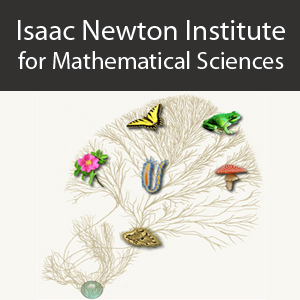Identifying Lateral Transfers with Neighbor-Nets
17 mins 1 sec,
61.29 MB,
WebM
640x360,
29.97 fps,
44100 Hz,
491.8 kbits/sec
Share this media item:
Embed this media item:
Embed this media item:
About this item

| Description: |
Thuillard, M
Monday 20 June 2011, 15:50-16:10 |
|---|
| Created: | 2011-06-23 16:59 | ||||
|---|---|---|---|---|---|
| Collection: | Phylogenetics | ||||
| Publisher: | Isaac Newton Institute | ||||
| Copyright: | Thuillard, M | ||||
| Language: | eng (English) | ||||
| Distribution: |
World
|
||||
| Credits: |
|
||||
| Explicit content: | No | ||||
| Aspect Ratio: | 16:9 | ||||
| Screencast: | No | ||||
| Bumper: | UCS Default | ||||
| Trailer: | UCS Default | ||||
| Abstract: | With the ever increasing availability of complete genomes, the importance of lateral transfers in evolution has been clearly recognized and increasing doubts are being raised about the feasibility of inferring a tree of life based on genome evolution. Identifying lateral gene transfers is therefore an important problem in evolutionary biology. A distance matrix in the Farris space that fulfills the Kalmanson inequalities can be exactly represented by an outer-planar split network or an X-tree. Using a simple model of lateral transfers one can show that a circular order of the taxa labeling the leaves of a phylogenetic tree is quite robust to lateral transfers. A circular order of the taxa is an order in which the taxa are encountered through a clockwise scanning of the tree embedded in the plane. If lateral transfers occur only between consecutive taxa in such an order, it can be shown that, within the usual distance-based framework for constructing phylogenetic trees, the o uter-planar network reconstructed by applying the Neighbor-Net algorithm furnishes a circular order of the nodes with the corresponding distance matrices in the Farris space fulfilling the Kalmanson inequalities. There are limits to the robustness of a circular order to lateral transfers. A new approach has been developed to deal with such cases. The approach combines the Neighbor-Net algorithm for computing phylogenetic networks with the Minimum Contradiction method. A subset of taxa, prescribed using Neighbor-Net, is obtained by measuring how closely the Kalmanson inequalities are fulfilled by each taxon. A criterion is then used to identify the taxa possibly involved in a lateral transfer between non-consecutive taxa. We illustrate the utility of the new approach by applying it to a distance matrix for Archaea, Bacteria and Eukaryota. Our new approach gives a way to use Neighbor-Nets to get further biological information, for instance to localize and identify lateral transfers or to detect large deviations to an X-tree or an outer-planar split network topology using distance matrices. In future, we expect that it will become increasingly important to develop new tools such as this that can allow one to extract useful biological information from trees and networks. |
|---|---|
Available Formats
| Format | Quality | Bitrate | Size | |||
|---|---|---|---|---|---|---|
| MPEG-4 Video | 640x360 | 1.85 Mbits/sec | 236.81 MB | View | Download | |
| WebM * | 640x360 | 491.8 kbits/sec | 61.29 MB | View | Download | |
| Flash Video | 484x272 | 569.13 kbits/sec | 71.14 MB | View | Download | |
| iPod Video | 480x270 | 506.27 kbits/sec | 63.35 MB | View | Download | |
| MP3 | 44100 Hz | 125.01 kbits/sec | 15.44 MB | Listen | Download | |
| Auto | (Allows browser to choose a format it supports) | |||||

